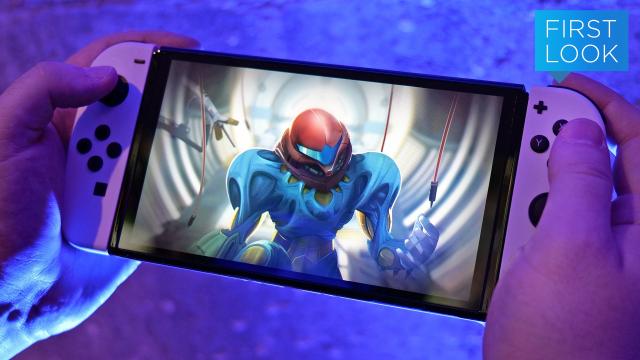The Nintendo Switch has never been the most cutting-edge console on the market. But after seeing the impact of what a handful of calculated upgrades has done for the new OLED Switch, it feels like Nintendo has finally created the hybrid console I wanted from the start.
The new OLED Switch is priced at $539, $70 more than the baseline model, and for that dough, you get the following features (ranked by what I think are the most important additions first):
- Larger 7-inch OLED display (up from 6.2 inches)
- Improved stereo speakers
- Double the base storage (64GB, up from 32GB)
- New dock with a built-in Ethernet port
- Redesigned kickstand
- Fresh black-and-white colour scheme
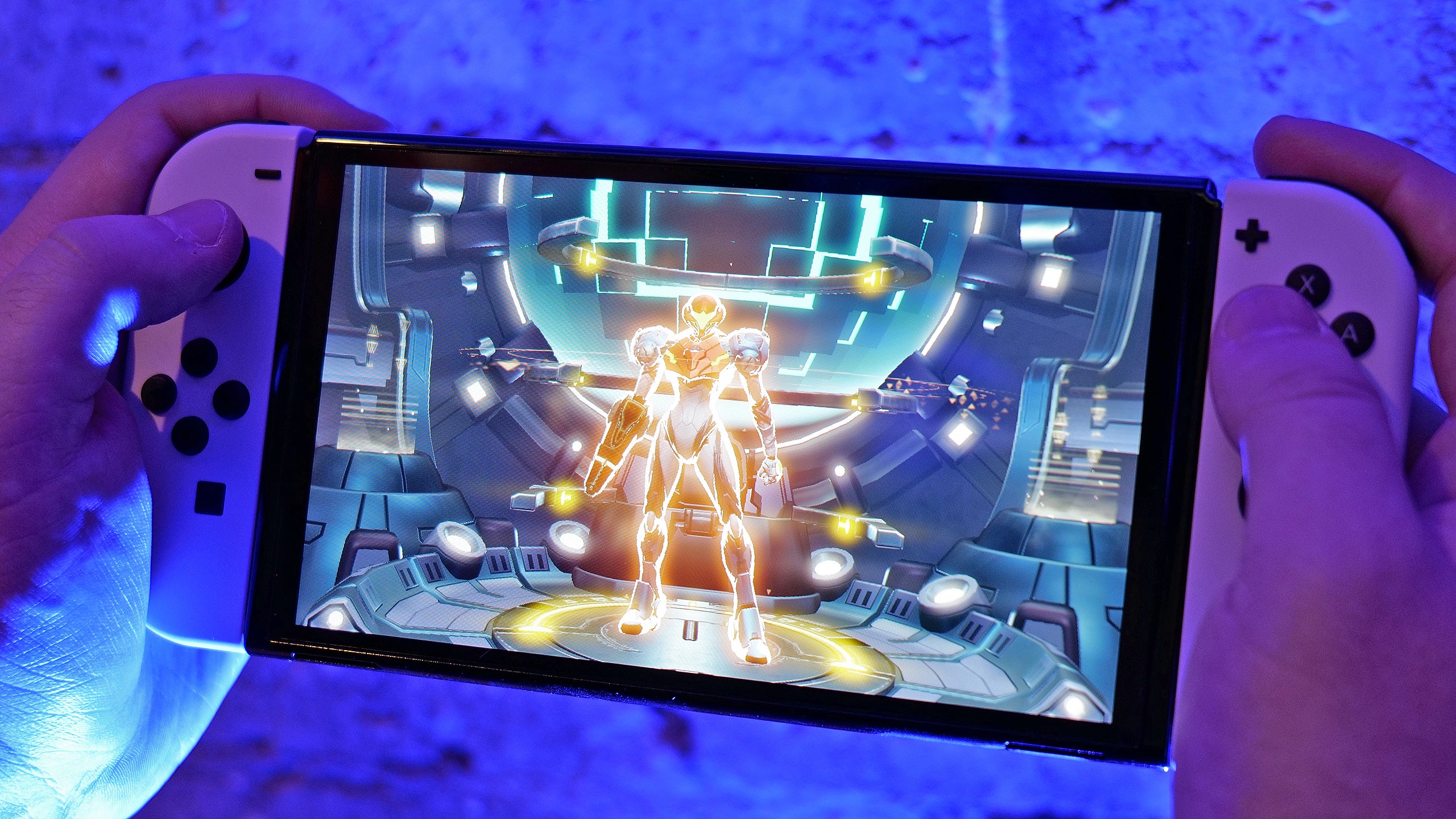
Obviously, the biggest upgrade for the OLED Switch is its new 7-inch OLED screen, which finally adds the kind of richness and colour saturation that people are used to seeing on modern phones, tablets, and even some laptops. And despite my initial reservations about Nintendo keeping the resolution of the OLED Switch at 720p, after playing Metroid Dread for about an hour, I can say those fears were unfounded.
The larger screen make gaming in handheld mode that much more enjoyable, even with the slight decrease in overall pixel density. When you’re holding the OLED Switch about a foot and a half away from your face or more, you can’t really make out individual pixels, so things look just as sharp as before.
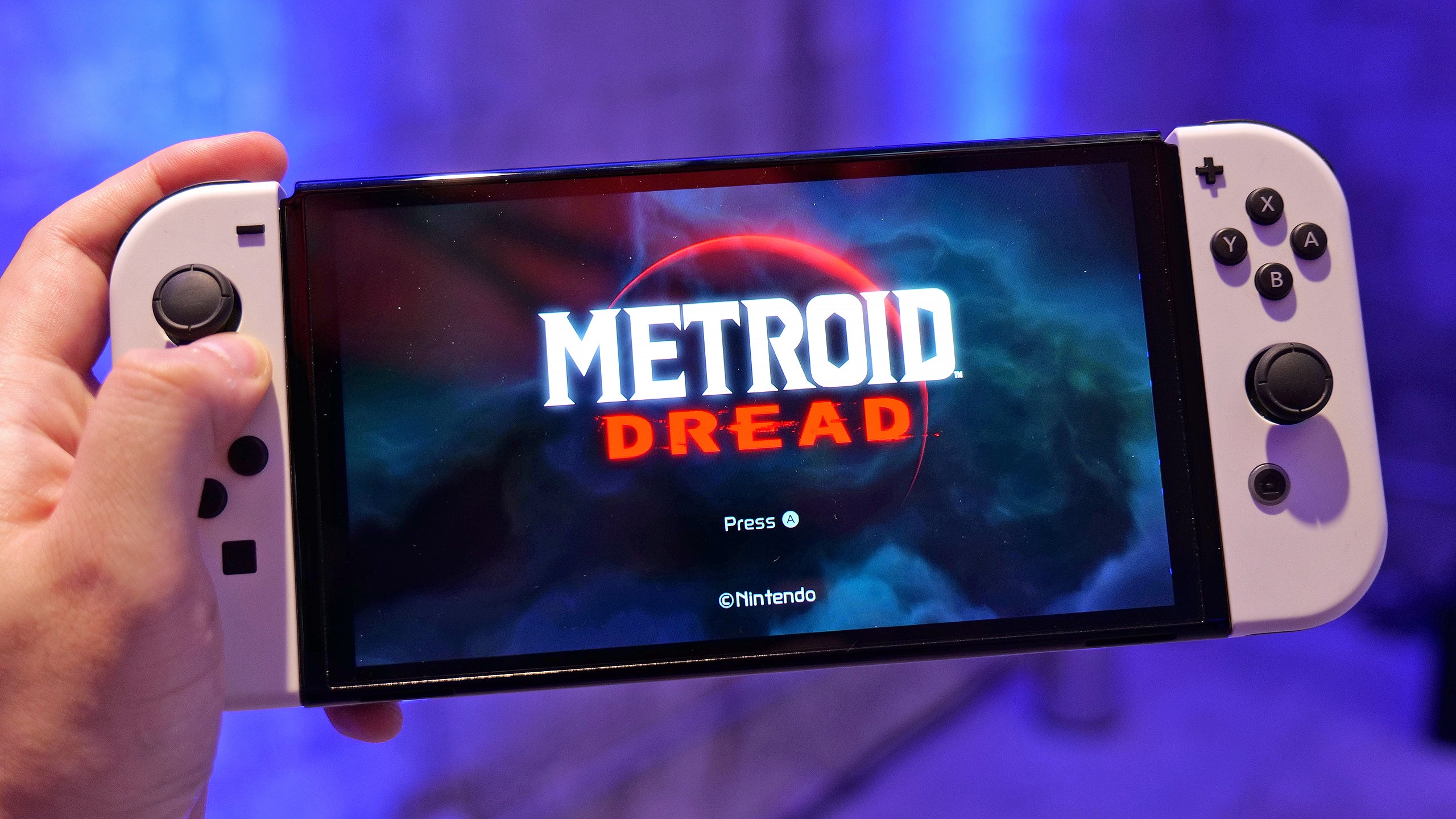
Because Nintendo was able to fit that new 7-inch OLED screen into the Switch by slimming down its bezels and not really increasing the overall size of the system, the OLED Switch’s proportions look and feel even better too, which definitely adds to overall immersion when gaming on the go. Frankly, even if Nintendo hadn’t upgraded anything else, the OLED Switch’s new screen is worth the extra $70 all on its own.
When playing Metroid Dread, the responsiveness I got while controlling Samus almost made it feel like the OLED Switch’s screen offers slightly reduced input latency, though I admit that may have partially been the result of having a new 2D Metroid to play. No hate to all the Metroid Prime fans out there, but jumping, ducking, and shooting your way through an old-school grid-based map just feels good, and it’s nice to have a fresh spin on a legendary franchise in 2021.
The OLED Switch’s initial announcement made audio seem more like a bonus than a core upgrade. But for people who enjoy playing handheld, it’s a real boon. Sure, it’s doesn’t approach 3D spatial audio or anything like that, and the OLED Switch’s speakers aren’t going to shake a room, but the new speakers add a little extra clarity and detail that you really do appreciate.
The OLED Switch’s new base 64GB of storage is probably the most overdue improvement, because honestly, 32GB was barely cutting it back in 2017. If you’ve had a Switch for a long time or just run through games quickly, you’re still going to need a microSD card slot. But for more casual players or people who stick to the same title for long stretches, the added on-board storage is just enough that you might not need to buy a microSD card at all, and that’s some potential savings right there.
Then comes the new Ethernet port on the OLED’s Switch’s dock, which is practically essential for competitive Smash Bros. players, and comes with the bonus of helping keep the clutter behind your media console to a minimum. The OLED Switch’s kickstand features a much wider base instead of the popsicle stick Nintendo used before, so propping the OLED Switch on a table actually feels like a reasonable idea and not a test to see if breathing on the system is enough to make it fall down.
And finally, there’s that new colour scheme. Now I’m not here to tell you what colours you should like, but as someone who immediately bought a second set of matching red Joy-con for my launch Switch, I think the new white Joy-Con looks so fresh and so clean.
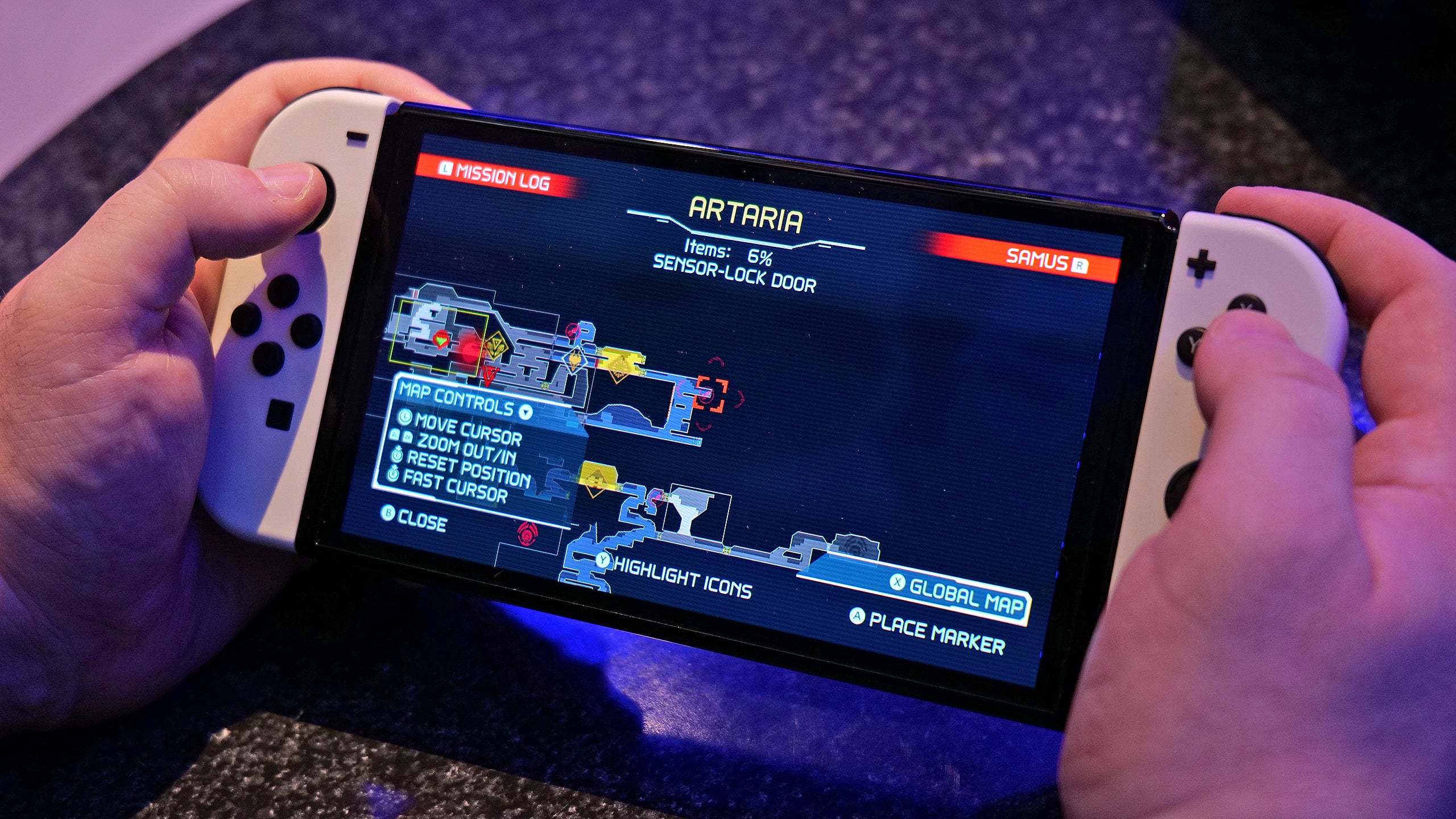
I’ve only spent an hour with the new OLED Switch, but it already seems obvious to me that anyone who doesn’t already have a Switch should get the OLED model. It’s not even close. Between the new OLED screen, better speakers, and more on-board storage, the OLED Switch is basically the console I wish I could have bought back in 2017. It’s more than just an update — the OLED Switch is the new default Switch.
For those of us who already own a Switch, deciding whether to upgrade is a bit more difficult. If I could pay $70 or even $140 to upgrade, I would. But spending an extra $539 to replace something that has served me well these last four years is a much bigger ask, especially because my main frustration with my current Switch is due to Joy-Con drift, which the new OLED Switch doesn’t address (at least as far as I can tell).
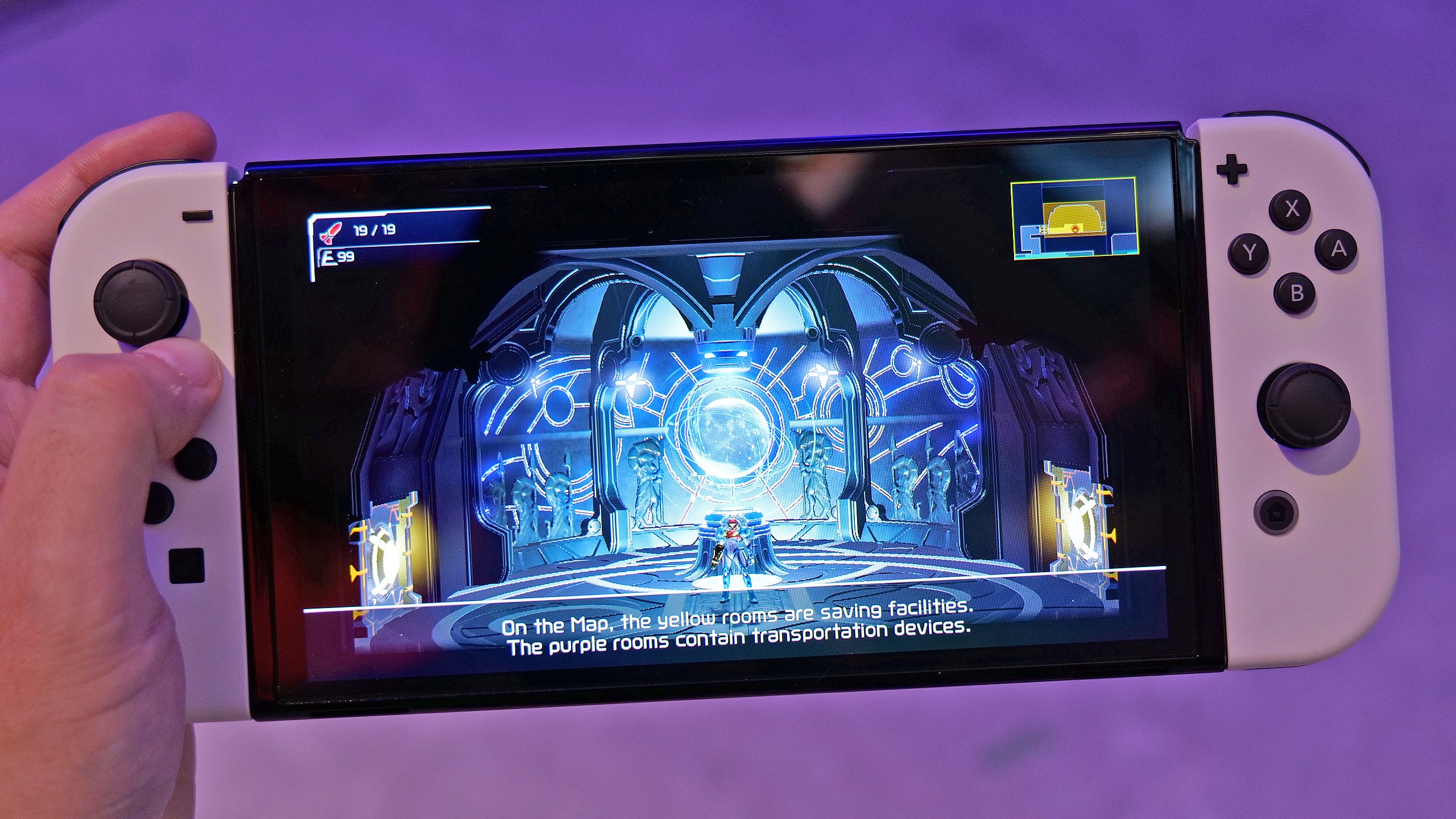
But at the same time, the upgraded image quality you get from that OLED screen is big, and I can’t fault any current Switch owners who want to move up. My wallet and my brain are telling me no, but the heart wants what it wants.
The new OLED Switch officially goes on sale October 8, though if you haven’t pre-ordered one already, you might have to wait.
